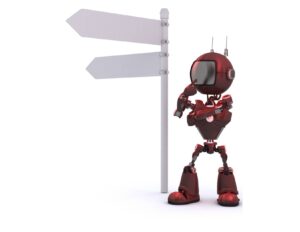Business to Business (B2B) ecommerce is a whole different animal from selling online to consumers (B2C). B2B is a broad term covering a range of business to business interactions including activities such as selling wholesale, distributing to large retailers, selling to organizations or suppliers selling to resellers.
While the B2B marketing details may differ, ecommerce is the way of the future for B2B and all B2B sellers who opt to go online will need an ecommerce store that is specifically optimized to cater to their clients’ unique needs. Your website could be used to support the B2B buyer’s journey from initial awareness, all the way through the intense research they typically perform and on to completing large, customized orders online.
The fundamental difference between B2B and B2C is that B2B purchases have a goal of making more money or reducing costs whereas B2C are for a variety of motivations — it could be solving a problem such as replacing a broken coffee maker or just something they want like a new iPhone because it’s the latest gadget.
In B2B ecommerce, the sales process is usually longer and more complex in comparison with the B2C sales funnel, but many of the B2B clients will stay with you long term. First-time B2B customers are less likely to order directly from a website — at least without interacting with a salesperson or an account manager first. The representative you are interacting with probably does not have final decision making ability, so they need to know as much about the product as possible in order to make a sound case for its purchase based on return on investment.
Providing appropriate educational material at each stage of the B2B buyer’s journey is critical, with a heavy onus on your website to deliver. Preserving a productive relationship with a happy B2B customer after the sale is also critical, but with different demands from your B2B ecommerce website. In this article we explore how you and your website can meet your B2B client’s needs at each stage of the buyer’s journey.
B2B Buyer’s Journey
The buyer’s journey is one of the most important elements to understand in order to get the right message to the right people at the right time. By understanding where your target customer is in the funnel, you will be able to nudge them towards the next step. Unlike B2C where there is usually only one or two people involved, the B2B “customer” can be a group of people or the contact person needs to refer to a committee or to a main decision-maker, making the process much longer and more intricate.
This means that many more people need to be convinced that the purchase will be beneficial to the business. Person to person contact remains extremely important in B2B ecommerce, but the B2B ecommerce website and store is becoming more important and integral to the whole process.
The B2B buyer’s journey is not linear, but can be roughly divided into 3 stages: Awareness, Consideration, and Decision. We will look at each of these in turn and point out some special considerations for B2B marketing and how your B2B ecommerce website can deliver.
Awareness
At this stage, the potential customer is experiencing some sort of problem or is seeing an opportunity for their business. They may not know about your services or products, and so at this point, it is important that they become aware of you and develop some trust in your business and services.
While this is also true for the B2C customer, the emphasis for the B2B customer is on facts and solving a specific problem with the ultimate goal of advancing their business. B2C motivations may be more spontaneous, emotionally- driven and even frivolous.
Be generous with the information you provide on your website or through social media such as LinkedIn for your potential B2B client. Making sure your website ranks well so it shows up in search results is important — implement SEO best practices. Building your reputation through industry networking and reviews is vital.
Your potential customer will start research to find solutions to fix their problem. Their problem is often well-defined, and your messaging should address their specific pain points. The B2B customer is especially interested in facts and stats as well as reviews from others at this stage. You could drive traffic with digital advertising to focused landing pages that provide plenty of facts and specs on your products to solve specific problems.
Types of material a B2B customer may be interested in at this phase might include checklists, white papers, and industry reports. It goes without saying that all this material must be easy to find on your website.
Consideration
After the potential customer learns about a number of businesses (including yours) that may have a solution for their problem, they will do further research to narrow down the list to 2 or 3 businesses they are interested in.
The degree and type of research a B2B customer will do is very different from your typical B2C customer. A B2C customer is more likely to make impulse purchases and they usually do not need to gain approval before they buy anything. Some types of B2C purchases do require more research and comparisons — those that are more expensive or those that need to perform a function, such as an appliance, but still, the underlying motive is different.
A B2B customer’s decision is based on how well the purchase fits into and benefits their business as a whole, especially how it impacts their bottom line, whereas a B2C decision is not usually related to leveraging their purchase to make money.
At this point, the B2B potential customer will do some in-depth comparison between your services and your competitors. Your website, the information and the presentation, will be a strong factor in a potential customer’s decision to reach out to your sales representative to learn more. Your website must provide the educational material with a focus on facts and practical features that will spike interest and build trust in your product.
If they are interested, they may contact you for more insight into how you can specifically solve their problem and provide a good return on investment (ROI). Some or all of this interaction may be via chat or email. Younger clients are more likely to be comfortable with chat interaction than older ones.
Whether in-person or via phone or chat, the purpose is the same: your potential customer will be gathering information to make a detailed presentation to those in authority in order to make the final decision. This relationship may need to be nurtured over a period of time. Product demos, webinars, case studies, ROI calculators, testimonials and person to person interactions are important at this point.
Decision
The final decision for your typical B2C customer is fairly uncomplicated compared to the B2B customer. Your B2C customer makes a decision without consulting anybody, often on a whim and buys directly from the website. Your job is to make the checkout process simple and quick.
The B2B customer may need to make presentations to decision makers or shareholders, the decision makers deliberate, perhaps require more information, and so on. Let’s say your contact has gained approval from the decision makers and the sale is made. That doesn’t mean the buyer’s journey is over! It is important to follow up and make sure your customer continues to be happy with their purchase. A happy customer can become your best advertisement — they will write good reviews, make recommendations within their network about your products and about doing business with you.
This is also true with your B2C customer, but with B2B the stakes are usually higher, and your gain potentially bigger for each customer. If you have provided an excellent solution to the business’s problem, especially one that is integral to their bottom line, the relationship with your business is likely to continue for some time. Long-term customers are gold and the relationship is well worth nurturing.
Ensuring that doing business with you is a pleasure could include online ordering. User Experience (UX) is important for any website, but especially for B2B ecommerce where mistakes can be exponentially disastrous. Provide detailed catalogues if applicable and the ability to customize orders easily and accurately. Make ordering easy, using automation if possible, to reduce errors, especially since the orders themselves may be complex. Always offer easy access to sales representatives either through chat or phone.
To Sum up…
The B2B buyer’s journey is different from the B2C experience. In order to provide appropriate messaging and resources to your potential or actual B2B customers, you must know what they require at each stage of the journey. From making sure your products and services are easily found and trustworthy to providing detailed information on your offerings, to enabling easy, accurate ordering and nurturing a productive relationship, all stages are important for long term success.



